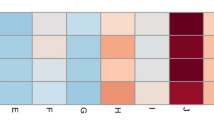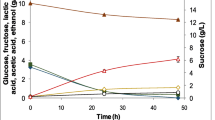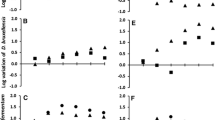Abstract
Bacterial contamination during industrial yeast fermentation has serious economic consequences for fuel ethanol producers. In addition to deviating carbon away from ethanol formation, bacterial cells and their metabolites often have a detrimental effect on yeast fermentative performance. The bacterial contaminants are commonly lactic acid bacteria (LAB), comprising both homo- and heterofermentative strains. We have studied the effects of these two different types of bacteria upon yeast fermentative performance, particularly in connection with sugarcane-based fuel ethanol fermentation process. Homofermentative Lactobacillus plantarum was found to be more detrimental to an industrial yeast strain (Saccharomyces cerevisiae CAT-1), when compared with heterofermentative Lactobacillus fermentum, in terms of reduced yeast viability and ethanol formation, presumably due to the higher titres of lactic acid in the growth medium. These effects were only noticed when bacteria and yeast were inoculated in equal cell numbers. However, when simulating industrial fuel ethanol conditions, as conducted in Brazil where high yeast cell densities and short fermentation time prevail, the heterofermentative strain was more deleterious than the homofermentative type, causing lower ethanol yield and out competing yeast cells during cell recycle. Yeast overproduction of glycerol was noticed only in the presence of the heterofermentative bacterium. Since the heterofermentative bacterium was shown to be more deleterious to yeast cells than the homofermentative strain, we believe our findings could stimulate the search for more strain-specific antimicrobial agents to treat bacterial contaminations during industrial ethanol fermentation.



Similar content being viewed by others
References
Alves DMG (1994) Fatores que afetam a formação de ácidos orgânicos, bem como outros parâmetros da fermentação alcoólica. MSc thesis, University of São Paulo, Piracicaba
Amorim HV, Oliveira AJ (1982) Infecção na fermentação: como evitá-la. Álcool e Açúcar 2:12–18
Amorim HV, Basso LC, Lopes ML (2009) Sugar cane juice and molasses, beet molasses and sweet sorghum: composition and usage. In: Ingledew WM, Kelsall, Austin GD, Kluhspies C (eds) The alcohol textbook, 5th edn. Nottingham University Press, Nottingham, pp 39–46
Axelsson L, Holck A, Birkeland SE, Aukrust T, Blom H (1993) Cloning and nucleotide-sequence of a gene from Lactobacillus sake lb706 necessary for sakacin-a production and immunity. Appl Environ Microbiol 59:2868–2875
Basso LC, de Amorim HV, de Oliveira AJ, Lopes ML (2008) Yeast selection for fuel ethanol production in Brazil. FEMS Yeast Res 8:1155–1163
Bayrock DP, Ingledew WM (2004) Inhibition of yeast by lactic acid bacteria in continuous culture: Nutrient depletion and/or acid toxicity? J Ind Microbiol Biotechnol 31:362–368
Cogan TM, Jordan KN (1994) Metabolism of Leuconostoc bacteria. J Dairy Sci 77:2704–2717
Condon S (1987) Responses of lactic-acid bacteria to oxygen. FEMS Microbiol Rev 46:269–280
Costa VM, Basso TO, Angeloni LHP, Oetterer M, Basso LC (2008) Production of acetic acid, ethanol and optical isomers of lactic acid by Lactobacillus strains isolated from industrial ethanol fermentations. Ciência e Agrotecnologia 32:503–509
Della-Bianca BE, Basso TO, Stambuk BU, Basso LC, Gombert AK (2013) What do we know about the yeast strains from the Brazilian fuel ethanol industry? Appl Microbiol Biotechnol 97:979–991
Eggleston G, Legendre B, Tew T (2004) Indicators of freeze-damaged sugarcane varieties which can predict processing problems. Food Chem 87:119–133
Eggleston G, Basso LC, de Amorim HV, Paulillo SCD, Basso TO (2007) Mannitol as a sensitive indicator of sugarcane deterioration and bacterial contamination in fuel alcohol production. Zuckerindustrie 132:33–39
Gallo CR (1990) Determinação da microbiota bacteriana de mosto e de dornas de fermentação alcoólica. PhD thesis, University of Campinas, Campinas
Garvie EI (1980) Bacterial lactate dehydrogenases. Microbiol Rev 44:106–139
Goffin P, Deghorain M, Mainardi JL, Tytgat I, Champomier-Verges MC, Kleerebezem M, Hols P (2005) Lactate racemization as a rescue pathway for supplying D-lactate to the cell wall biosynthesis machinery in Lactobacillus plantarum. J Bacteriol 187:6750–6761
Huet JM (2011) General subject 8: beet sugar processing. In: Proceedings of the 27th international commission for uniform methods of sugar analysis, Berlin, pp 77–102
Kandler O (1983) Carbohydrate-metabolism in lactic-acid bacteria. Antonie van Leeuwenhoek J Microbiol 49:209–224
Kandler O, Weiss N (1986) Lactobacillus. In: Williams ST, Sharpe ME, Holt JG (eds) Bergey’s manual of systematic bacteriology, vol 4. Williams and Wilkins, Baltimore, pp 1209–1234
Lucena BTL, dos Santos BM, Moreira JLS, Moreira APB, Nunes AC, Azevedo V, Miyoshi A, Thompson FL, Morais MA (2010) Diversity of lactic acid bacteria of the bioethanol process. BMC Microbiol 10:298–306
Maligoy M, Mercade M, Cocaign-Bousquet M, Loubiere P (2008) Transcriptome analysis of Lactococcus lactis in coculture with Saccharomyces cerevisiae. Appl Environ Microbiol 74:485–494
Narendranath NV, Hynes SH, Thomas KC, Ingledew WM (1997) Effects of lactobacilli on yeast-catalyzed ethanol fermentations. Appl Environ Microbiol 63:4158–4163
Oliva-Neto P, Yokoya F (1994) Evaluation of bacterial contamination in a fed-batch fermentation process. World J Microbiol Biotechnol 10:697–699
Oliveira AJ, Gallo CR, Alcarde VE, Godoy A, Amorim HV (1996) Métodos para o controle microbiológico na produção de álcool e açúcar. Fermentec/FEALQ/ESALQ/USP, Piracicaba
Serra GE, Cereda MP, Feres RJ, Bertozo MT, Vicente AT (1979) Contaminação da fermentação alcoólica: “floculação do fermento”. Brasil Açucareiro 93:26–31
Skinner KA, Leathers TD (2004) Bacterial contaminants of fuel ethanol production. J Ind Microbiol Biotechnol 31:401–408
Souza RB, dos Santos BM, de Fátima Rodrigues de Souza R, da Silva PK, Lucena BT, de Morais MA Jr (2012) The consequences of Lactobacillus vini and Dekkera bruxellensis as contaminants of the sugarcane-based ethanol fermentation. J Ind Microbiol Biotechnol 39:1645–1650
Stambuk BU, Dunn B, Alves SL, Duval EH, Sherlock G (2009) Industrial fuel ethanol yeasts contain adaptive copy number changes in genes involved in vitamin B1 and B6 biosynthesis. Genome Res 19:2271–2278
Steinmetz K, Buczys R, Buchholz K (1998) The quality of frost-damaged sugar beet. Zuckerindustrie 123:933–942
Thomas KC, Hynes SH, Ingledew WI (2001) Effect of lactobacilli on yeast growth, viability and batch and semi-continuous alcoholic fermentation of corn mash. J Appl Microbiol 90:819–828
Viana R, Yebra MJ, Galan JL, Monedero V, Perez-Martinez G (2005) Pleiotropic effects of lactate dehydrogenase inactivation in Lactobacillus casei. Res Microbiol 156:641–649
von Weymarn N, Hujanen M, Leisola M (2002) Production of d-mannitol by hetero-fermentative lactic acid bacteria. Process Biochem 37:1207–1213
Zago EA, Amorim HV, Basso LC, Gutierrez LE, Oliveira AJ (1989) Métodos analíticos para o controle da produção de álcool. Fermentec/CEBTEC/ESALQ/USP, Piracicaba
Acknowledgments
We wish to acknowledge Graeme Walker and Andreas Gombert for reviewing the manuscript, suggestions and linguistic improvements. The authors also would like to thank Fermentec (Piracicaba, Brazil) for providing the microorganisms utilised in this study, industrial data, as well as financial support. We also appreciate the technical assistance of Luis Lucatti and Flávia Salvatto. Mention of trade names or commercial products in this article is solely for the purpose of providing specific information and does not imply recommendation or endorsement by the U.S. Department of Agriculture.
Conflict of interest
The authors declare that they have no conflict of interest.
Author information
Authors and Affiliations
Corresponding author
Rights and permissions
About this article
Cite this article
Basso, T.O., Gomes, F.S., Lopes, M.L. et al. Homo- and heterofermentative lactobacilli differently affect sugarcane-based fuel ethanol fermentation. Antonie van Leeuwenhoek 105, 169–177 (2014). https://doi.org/10.1007/s10482-013-0063-6
Received:
Accepted:
Published:
Issue Date:
DOI: https://doi.org/10.1007/s10482-013-0063-6




